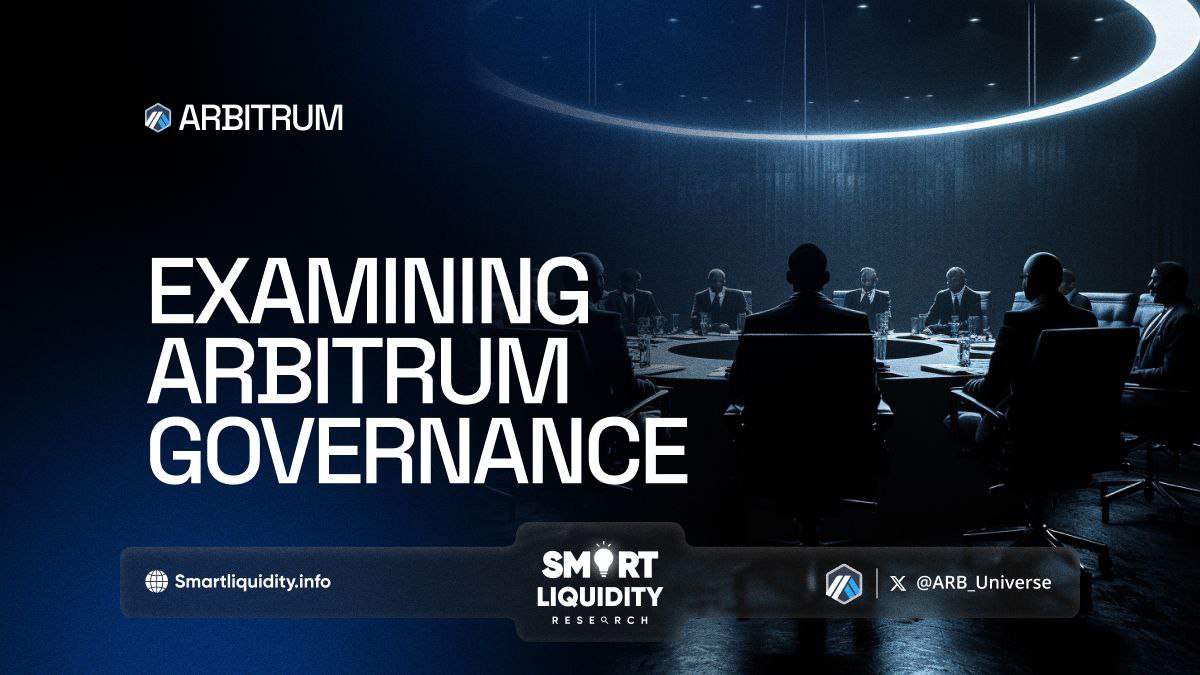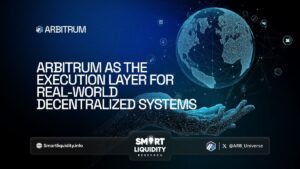Examining Arbitrum Governance


Examining Arbitrum Governance! Arbitrum, a prominent Layer 2 scaling solution for Ethereum, has been a topic of significant interest within the decentralized finance (DeFi) community. Its governance model, designed to foster decentralized decision-making, is crucial for its long-term success and sustainability.
In this article, we delve into the intricacies of Arbitrum’s governance, exploring its structure, key components, and implications for users and developers.
The Structure of Arbitrum Governance
Arbitrum employs a decentralized governance model that aims to balance efficiency with inclusivity. At its core, Arbitrum’s governance is designed to ensure that decisions are made transparently and democratically, involving a wide range of stakeholders.
- Arbitrum DAO (Decentralized Autonomous Organization): The Arbitrum DAO is the central governing body responsible for making critical decisions regarding the protocol. It operates through a token-based voting system, where holders of Arbitrum’s native token, ARB, can participate in governance proposals.
- Governance Proposals: Proposals can be submitted by any ARB token holder, but they must meet certain criteria to be considered. These proposals cover a wide range of topics, including protocol upgrades, parameter adjustments, and treasury allocations. Each proposal undergoes a rigorous review process before being put to a vote.
- Voting Mechanism: Voting on proposals is conducted using ARB tokens. The weight of a vote is proportional to the number of tokens held by a participant. This mechanism ensures that those with a greater stake in the network have a correspondingly larger influence on its direction. However, it also raises concerns about the concentration of power among large token holders.
- Delegation: To address issues of voter apathy and low participation rates, Arbitrum allows for delegation. Token holders can delegate their voting power to trusted representatives, who can vote on their behalf. This system aims to streamline the decision-making process and ensure that all voices are represented.
Key Components and Stakeholders
Arbitrum’s governance involves multiple stakeholders, each playing a vital role in the ecosystem.
- Token Holders: ARB token holders are the backbone of the governance system. Their participation in voting and proposal submission is crucial for the health and progression of the network.
- Developers: Developers building on Arbitrum contribute to the ecosystem by proposing technical upgrades and improvements. Their insights and expertise are invaluable for the protocol’s evolution.
- Community: The broader Arbitrum community, including users and enthusiasts, plays an essential role in shaping governance discussions. Community feedback and engagement helps ensure that the governance process remains aligned with the needs and aspirations of its users.
- Governance Forums: Online forums and discussion platforms provide a space for the community to debate proposals, share ideas, and coordinate efforts. These forums are vital for maintaining transparency and fostering collaboration among stakeholders.
Implications and Challenges
Arbitrum’s governance model has several implications for its future development and adoption.
- Decentralization and Security: By distributing decision-making power among a broad base of participants, Arbitrum enhances its security and resilience. Decentralized governance reduces the risk of single points of failure and ensures that the network can adapt to changing circumstances.
- Incentive Alignment: Governance mechanisms must align the incentives of various stakeholders to ensure cohesive and sustainable growth. Properly structured incentives encourage active participation and long-term commitment from token holders, developers, and the community.
- Challenges of Centralization: Despite efforts to promote decentralization, there is always the risk of power concentration among large token holders. Ensuring that governance remains truly decentralized requires continuous monitoring and potential adjustments to the governance model.
- Scalability of Governance: As Arbitrum grows, its governance model must scale accordingly. This involves not only technical scalability but also the ability to manage a growing number of proposals and participants effectively.
In Summary
Arbitrum’s governance is a dynamic and evolving system that plays a critical role in its success as a leading Layer 2 solution for Ethereum. By fostering a transparent, democratic, and inclusive decision-making process, Arbitrum aims to create a robust and resilient ecosystem. However, the challenges of maintaining true decentralization and scaling governance mechanisms require ongoing attention and innovation. As the DeFi landscape continues to evolve, Arbitrum’s governance will undoubtedly face new tests and opportunities, shaping the future of decentralized finance.




